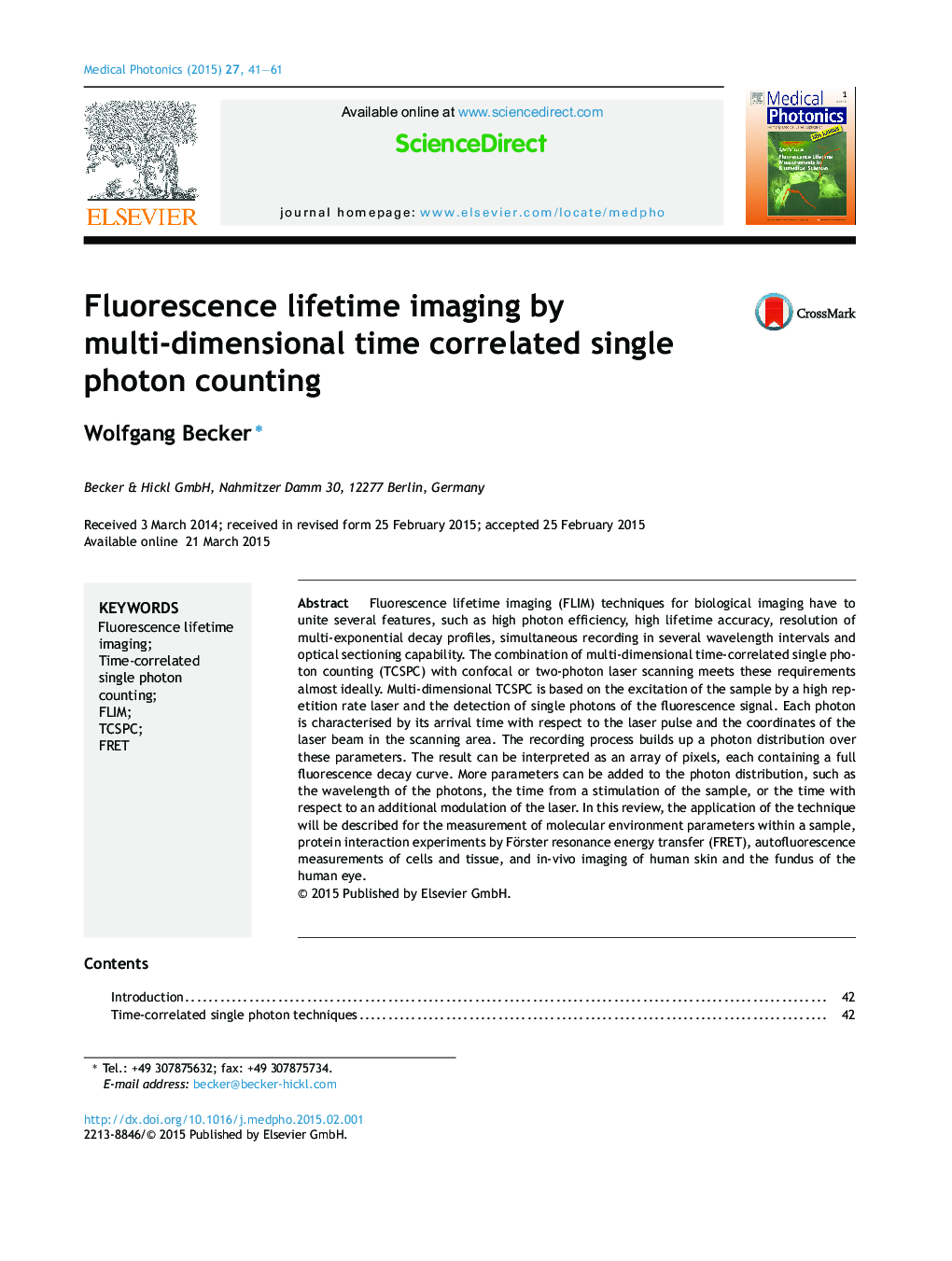| Article ID | Journal | Published Year | Pages | File Type |
|---|---|---|---|---|
| 2068538 | Medical Photonics | 2015 | 21 Pages |
Fluorescence lifetime imaging (FLIM) techniques for biological imaging have to unite several features, such as high photon efficiency, high lifetime accuracy, resolution of multi-exponential decay profiles, simultaneous recording in several wavelength intervals and optical sectioning capability. The combination of multi-dimensional time-correlated single photon counting (TCSPC) with confocal or two-photon laser scanning meets these requirements almost ideally. Multi-dimensional TCSPC is based on the excitation of the sample by a high repetition rate laser and the detection of single photons of the fluorescence signal. Each photon is characterised by its arrival time with respect to the laser pulse and the coordinates of the laser beam in the scanning area. The recording process builds up a photon distribution over these parameters. The result can be interpreted as an array of pixels, each containing a full fluorescence decay curve. More parameters can be added to the photon distribution, such as the wavelength of the photons, the time from a stimulation of the sample, or the time with respect to an additional modulation of the laser. In this review, the application of the technique will be described for the measurement of molecular environment parameters within a sample, protein interaction experiments by Förster resonance energy transfer (FRET), autofluorescence measurements of cells and tissue, and in-vivo imaging of human skin and the fundus of the human eye.
